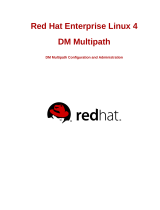
Post-Configuration Steps................................................................................................................................................ 31
AppsOn: Virtual Machine Compute and Storage Collocation Rules for PowerStore X Clusters..............31
Disk Formatting.............................................................................................................................................................31
Presenting PowerStore Volumes to the ESXi Host............................................................................................. 31
Creating a File System............................................................................................................................................... 32
VMware Paravirtual SCSI Controllers.................................................................................................................... 32
Virtual Disk Provisioning............................................................................................................................................ 32
Virtual Machine Guest OS Settings........................................................................................................................ 32
Chapter 4: Host Configuration for Microsoft Windows................................................................ 33
Related E-Lab Host Connectivity Guide...................................................................................................................... 33
Recommended Configuration Values Summary.........................................................................................................33
Boot from SAN...................................................................................................................................................................34
Fibre Channel Configuration........................................................................................................................................... 34
Pre-Requisites.............................................................................................................................................................. 34
iSCSI Configuration...........................................................................................................................................................34
Pre-Requisites..............................................................................................................................................................35
PowerStore Operating System 1.x Only - Single Subnet...................................................................................35
PowerStore Operating System 2.x and Above - Multi Subnet........................................................................ 35
Multipathing Software Configuration...........................................................................................................................36
Configuring Native Multipathing Using Microsoft Multipath I/O (MPIO).....................................................36
PowerPath Configuration with PowerStore Volumes........................................................................................ 37
Post-Configuration Steps - Using the PowerStore system....................................................................................37
Presenting PowerStore Volumes to the Windows Host.................................................................................... 38
Creating a File System............................................................................................................................................... 38
Chapter 5: Host Configuration for Linux......................................................................................39
Related E-Lab Host Connectivity Guide......................................................................................................................39
Recommended Configuration Values Summary.........................................................................................................39
Boot from SAN.................................................................................................................................................................. 40
Fibre Channel and NVMe over Fibre Channel Configuration..................................................................................40
Pre-Requisites..............................................................................................................................................................40
NVMe/FC Configuration on Linux Hosts.............................................................................................................. 40
iSCSI Configuration........................................................................................................................................................... 41
Pre-Requisites...............................................................................................................................................................41
PowerStore Operating System 1.x Only - Single Subnet....................................................................................41
PowerStore Operating System 2.x and Above - Multi Subnet.........................................................................43
Configuring the PowerStore Cluster Disk Device with iSCSI........................................................................... 44
Multipathing Software Configuration...........................................................................................................................45
Configuring Linux Native Multipathing...................................................................................................................45
PowerPath Configuration with PowerStore Volumes........................................................................................ 46
Configuring Device Mapper Multipathing (DM-multipathing) with NVMe/FC............................................46
Configuring Oracle ASM............................................................................................................................................ 47
Post-Configuration Steps - Using the PowerStore system....................................................................................47
Presenting PowerStore Cluster Volumes to the Linux Host.............................................................................47
Partition Alignment in Linux...................................................................................................................................... 48
Creating a File System............................................................................................................................................... 48
Chapter 6: Host Configuration for AIX.........................................................................................49
4Contents





















